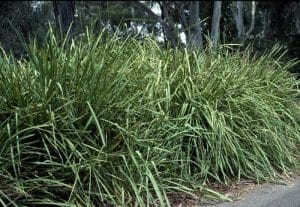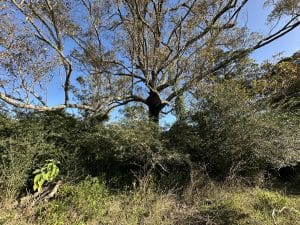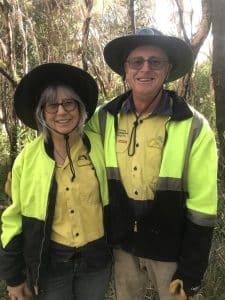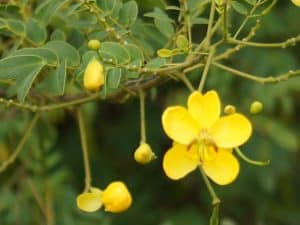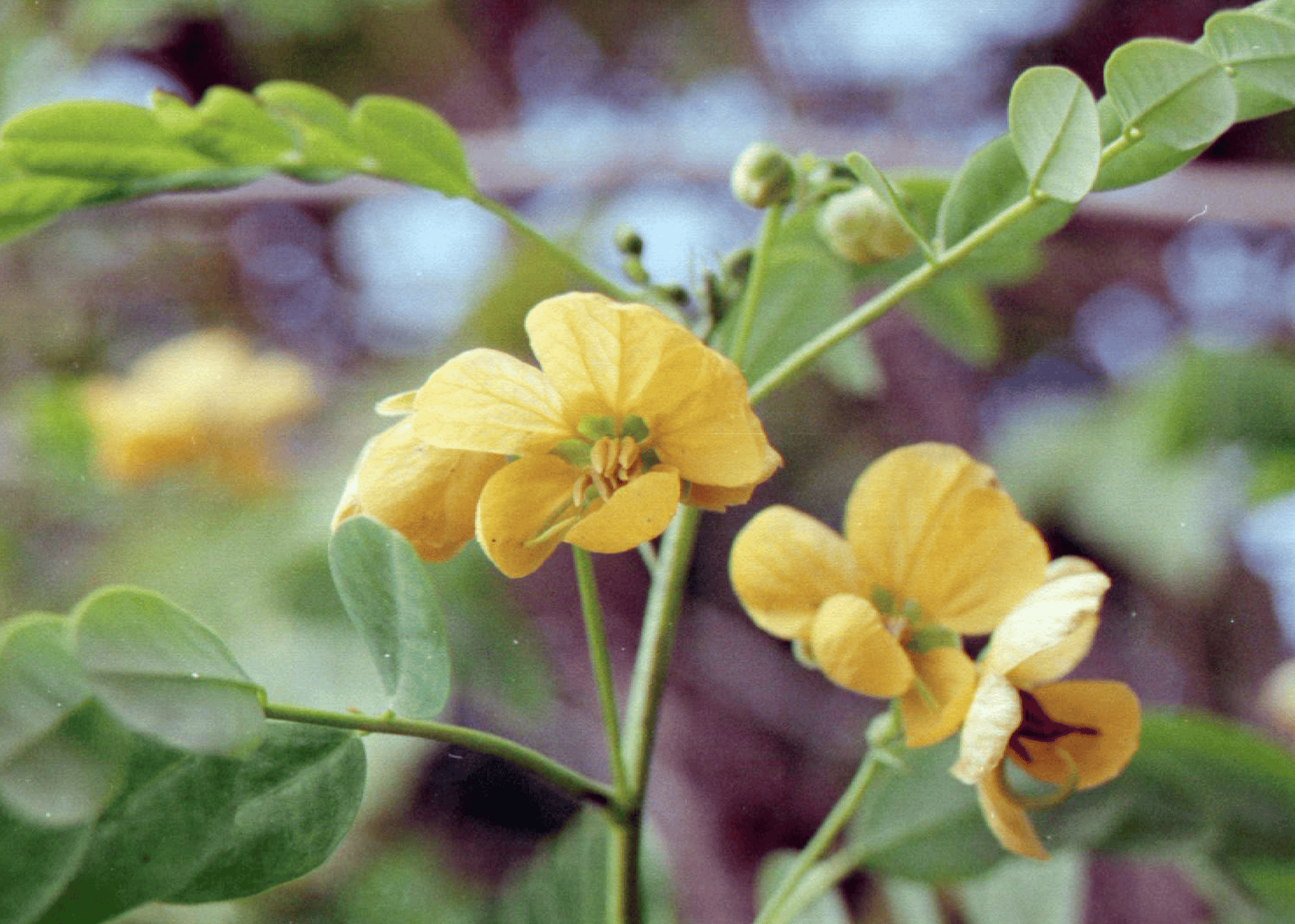
This spreading shrub grows up to three metres and is easily confused with the weedy “Cassia”, Senna pedula var. glabrata. Both species of Senna produce showy yellow flowers of similar form, compound leaves and bean-like pods. The native Senna acclinis is an endangered plant and it is important for people working in restoration to be able to distinguish between the two species, as they often occur in the same habitats. The weedy species is a serious threat to the health and function of native forests and needs to be actively managed.
Distinguishing the two species requires careful observation, use of a hand lens is helpful.
The native Senna acclinis has golden-yellow flowers, produced in sprays (peduncles) of 2 to 5, and have 10 fertile stamens, 1-2mm long. It flowers Spring-Summer, which distinguishes it from the weedy species, which has bright yellow flowers in Autumn-early winter. The weedy Cassia flower has 6-7 fertile stamens, up to 8mm long (sterile filaments to 15mm).
The seed pods in the native species are long and flattened (12-15cm), and turn black and papery when mature. Old pods may be held on the shrub for subsequent seasons, and can be used to distinguish it from the weedy species, which are of similar length (10-14cm) have rounded, pithy, green bean-like pods that turn straw-coloured when mature.
The compound leaves of the native species are blueish-green, slightly smaller, leaflets narrower in shape than the weedy species, with a basal leaf gland that is delicate and pole-like in shape. In the weedy species, the basal leaf gland is larger, swollen and urn-shaped; the leaflets slightly larger and more rounded, often a lighter, grass-green, with a yellowed edge. The overall habit of the weedy species tends to be more erect and robust, and occurs in a greater range of habitats. The native Senna acclinis is generally restricted to rainforest communities, and the key threat to this species is habitat degradation and loss; so it is imperative we protect the remaining populations.
As with all restoration programs, a thorough site assessment prior to commencing works will identify weed species, ecosystem type, and any threatened species. It is helpful to map vegetation types, including the location of any threatened plant species; weed distribution and density. Volunteers working on Council reserves can contact the Natural Systems section of Council if they need assistance in the identification of native or exotic plants on their patch. Private landholders can seek advice from Landcare, with customised property assessments available through the Land for Wildlife program. For more information, contact Isabelle Strachan on mc2t.plconservation@gmail.com
This article is part of the Partnering in Private Land Conservation. A joint initiative delivered by Landcare NSW and the NSW Biodiversity Conservation Trust.


